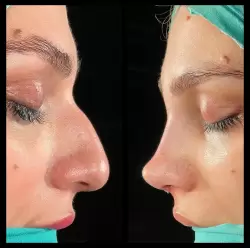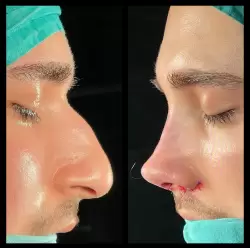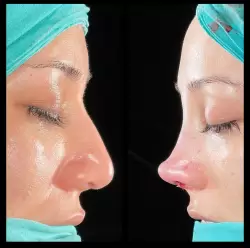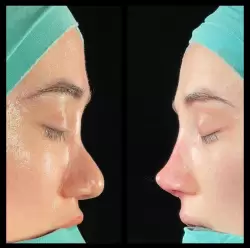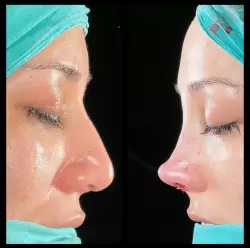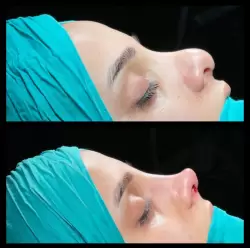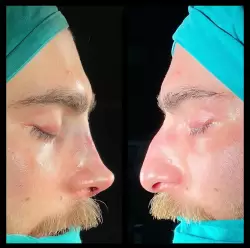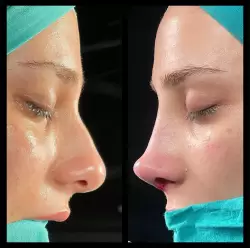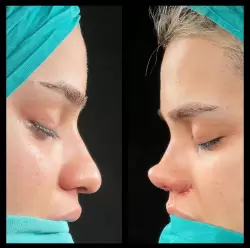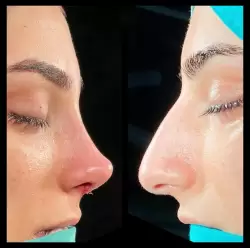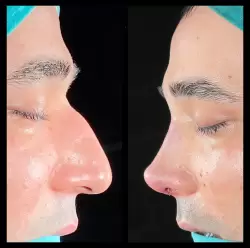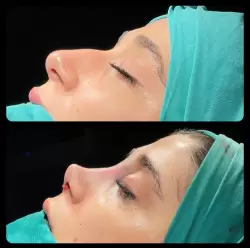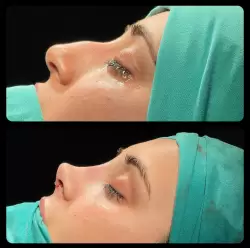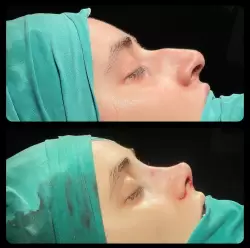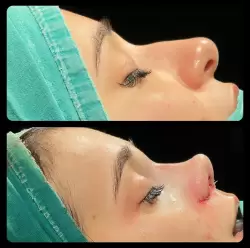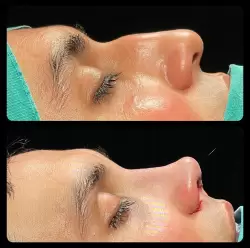What is the Piezo Method in Nose Aesthetics?
Piezo method is a technique used in rhinoplasty surgeries. This technique uses ultrasonic vibrations to shape the nasal bones. Piezo is derived from the Greek word “piezein” meaning “pressure”. Piezo method, instead of cutting bones during rhinoplasty, uses ultrasonic vibrations to cut bones. This method provides a more precise approach during rhinoplasty operations and provides less trauma during the cutting of bones.
Since the piezo method creates less vibration and noise during surgery, it causes less discomfort compared to other methods. In addition, since the blades used to cut bones with the piezo method are less heated compared to other methods, less heat is exposed, which can accelerate the healing process. During rhinoplasty surgeries, the piezo method can be used to shape and reposition the nasal bones. In particular, it can be used in processes such as shaping the tip of the nose, narrowing the nasal bones and correcting the protrusions on the nasal ridge. The piezo method is a safe technique for rhinoplasty surgeries. However, the use of this method depends on the experience of the surgeon and the correct use of the piezo device. Piezo method in rhinoplasty offers many advantages compared to other methods;
More precise: The piezo method uses ultrasonic vibrations to cut bones, providing a more precise approach compared to other methods. This method gives the surgeon a better view and allows the bones to be shaped more clearly.
Less trauma: The piezo method creates less trauma compared to other methods for cutting bones. This ensures less swelling and bruising after surgery.
Less pain: The piezo method gives less pain and discomfort compared to other methods. Therefore, less painkillers may be needed in the postoperative period.
Less bleeding: The piezo method produces less bleeding compared to other methods. Therefore, the risk of bleeding in the postoperative period is lower.
Faster healing process: Since the piezo method creates less trauma and less bleeding compared to other methods, the healing process can be faster. Since the swelling and bruises will be less after the surgery, patients can return to their normal activities earlier.
Due to these advantages, the Piezo method has become a preferred technique in rhinoplasty surgeries. However, as every patient is different, it is best to decide with your surgeon which method to use.
In Which Situations Is Micromotor and Piezo Method Preferred in Nasal Aesthetics?
In rhinoplasty, micromotor and piezo methods are generally used for shaping and cutting the nasal bones. Both techniques can be preferred in appropriate cases in rhinoplasty surgery.
The micromotor method is used for cutting or shaping bones, while the piezo method is only used for shaping bones. The micromotor method is faster and more efficient, but noisier and can create vibrations when cutting bones. The piezo method is quieter and less invasive as it slowly shapes bones rather than cutting them.
Rhinoplasty surgeons usually decide which method to use depending on the patient’s nose structure and personal preferences. The micromotor method can be used in cases where the nasal bone needs to be cut more, while the piezo method can be used in cases where a less invasive approach is preferred. In summary, which method to use for rhinoplasty may vary depending on the surgeon’s preference, the patient’s nose structure and personal preferences.
Frequently Asked Questions About Rhinoplasty
How Long Does Nose Aesthetic Surgery Take?
The duration of rhinoplasty surgery may vary depending on the scope of the surgery, the procedures to be performed and the patient’s condition. Generally, rhinoplasty operations take between 1-3 hours. However, more complex procedures or revision surgeries may take longer. In addition, factors such as the pre-operative preparation process, application of anesthesia and entering the operating room can affect the total time. Therefore, how long the rhinoplasty surgery will take may be different for each patient.
Which Age Range Is Suitable For Nose Aesthetic Surgery?
The appropriate age range for rhinoplasty surgery is generally 18 years and above, after the adolescence period when the nose development is completed. However, in some exceptional cases, it may be necessary to perform the surgery at an earlier age, for reasons such as a congenital deformity of the nose shape or an accidental deterioration. Rhinoplasty surgery is generally recommended to be performed after the adolescence period, when the nose structure of the person is fully developed. The reason for this is that with the completion of the nose structure, the shape of the nose becomes clear and the surgical result becomes more predictable. However, since each person’s nose structure and needs are different, there is no definite rule about the appropriate age range for surgery. Therefore, it is better to consult with your doctor before the operation.
How Long Does the Nose Shape Take After Nose Aesthetic Surgery?
The shape of the nose after rhinoplasty may change during the healing process. The nose may be full of swelling and bruises for the first few days after surgery. Therefore, it may take several weeks or even several months until the nose shape is fully defined. In the first few weeks, the nose may swell due to edema and bruises, which can cause changes in the shape of the nose. During the healing process, the shape of the nose will gradually become clearer and time will be required for the nasal bones and cartilages to settle in place. It is important to be patient and act in accordance with the healing process until the nose shape is fully formed after rhinoplasty.

